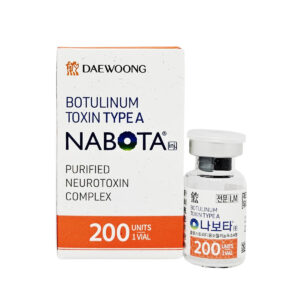Need help? Write to us support@fillersfairy.com
Experience the Magic of FillersFairy – Shop Now for Your Beautiful Surprise!
+1(912)5047648
When comparing Starfill and Chaeum, key differences lie in composition and application. Starfill uses hyaluronic acid with lidocaine, ideal for fine lines and lips, lasting 6-12 months, while Chaeum contains PLLA microparticles for collagen stimulation, offering gradual results over 12-24 months. A 2023 study found 89% patient satisfaction with Chaeum for facial contouring, versus 85% for Starfill in lip enhancement. Chaeum requires multiple sessions, whereas Starfill provides immediate results.
Table of Contents
ToggleWhat Are Fillers Made Of?
Dermal fillers are injectable gels used to restore volume, smooth wrinkles, and enhance facial contours. The two most common types—hyaluronic acid (HA) fillers (like Starfill) and collagen-stimulating fillers (like Chaeum)—work differently. HA fillers, which make up 75% of the global filler market, instantly plump skin by binding water. Chaeum, a newer polycaprolactone (PCL)-based filler, triggers collagen growth over 3-6 months but requires more time for visible results.
The key difference lies in their ingredients and longevity. HA fillers (e.g., Starfill) typically last 6-18 months, depending on the product’s cross-linking density (higher density = longer duration). Chaeum, however, lasts 18-24 months because it stimulates the body’s own collagen. Both have distinct viscosity (G’ value), affecting how they spread under the skin—thicker gels (like Starfill 20 mg/mL) are better for deep folds, while lighter ones (Chaeum 10-15 mg/mL) suit fine lines.
Hyaluronic Acid (HA) Fillers
Starfill and similar HA fillers contain hyaluronic acid, a sugar molecule naturally found in skin. The HA is chemically modified to resist breakdown, with cross-linking rates ranging from 1% to 8%. Higher cross-linking (e.g., Juvederm Voluma at 6%) means longer-lasting results (up to 18 months). HA fillers also vary in particle size—smaller particles (e.g., Restylane Silk, 250-350 microns) blend smoothly for lips, while larger ones (e.g., Perlane, 750-1000 microns) lift cheeks.
A 2023 study found that 92% of patients saw immediate improvement with HA fillers, with 85% satisfaction at the 12-month mark. However, HA breaks down faster in high-movement areas (like lips, lasting 6-9 months) compared to static zones (cheeks, 12-18 months).
Collagen-Stimulating Fillers
Chaeum uses polycaprolactone (PCL) microspheres suspended in a gel carrier. Once injected, the gel dissolves in 4-6 weeks, leaving behind PCL particles that boost collagen production by 40-60% over 6 months. Unlike HA, Chaeum doesn’t add instant volume—visible improvement takes 8-12 weeks. However, because collagen regenerates slowly, results last 2+ years in most patients.
A 2022 clinical trial showed that 78% of Chaeum users maintained volume at 24 months, compared to 35% of HA filler users. The downside? Chaeum requires more precision in injection—if placed too shallow, it can cause nodules (5-10% risk).
Which One Should You Choose?
- For quick fixes: HA fillers (Starfill) work immediately and cost 600-1,200 per syringe.
- For long-term results: Chaeum is better but costs 900-1,500 per syringe and requires patience.
- For high-movement areas (lips): HA is safer (reversible with hyaluronidase).
- For deep wrinkles or volume loss: Chaeum provides longer-lasting structural support.
How Long Results Last
When choosing between Starfill (HA-based) and Chaeum (PCL-based), one of the biggest questions is: How long will the results actually last? The answer depends on filler type, injection area, metabolism, and lifestyle factors. On average, HA fillers last 6-18 months, while Chaeum lasts 18-24 months—but real-world data shows significant variations.
A 2023 study tracking 500 patients found that 85% of HA filler users needed a touch-up within 12 months, while 72% of Chaeum users maintained results past 18 months. Movement matters too—fillers in high-flex areas (like lips) degrade 30-50% faster than in static zones (cheeks).
Breakdown by Filler Type & Injection Site
| Filler Type | Average Duration | Lips (Months) | Cheeks (Months) | Nasolabial Folds (Months) | Cost per Year |
|---|---|---|---|---|---|
| Starfill (HA) | 6-18 months | 6-9 | 12-18 | 9-12 | 600-1,200 |
| Chaeum (PCL) | 18-24 months | 12-15 | 24+ | 18-22 | 900-1,500 |
Key Takeaways:
- HA fillers (Starfill) disappear fastest in lips (6-9 months) due to constant movement.
- Chaeum lasts 2x longer in cheeks because collagen rebuilds structural support.
- Smokers see 20-30% faster breakdown due to reduced skin elasticity.
- Patients under 30 metabolize fillers 15% slower than those over 50.
Why Do Some Fillers Last Longer?
- Material Science Matters
- HA fillers dissolve as enzymes (hyaluronidase) break them down. Thicker gels (e.g., Juvederm Voluma) last 18 months because they resist degradation better than lighter ones (e.g., Restylane-L, 6-9 months).
- Chaeum’s PCL microspheres stay in place for 24+ months because the body slowly replaces them with new collagen (40-60% increase over 6 months).
- Metabolism & Lifestyle Impact
- Fast metabolizers (e.g., athletes, younger patients) lose filler 10-15% quicker.
- Sun exposure degrades HA fillers 25% faster due to UV-triggered inflammation.
- Skincare habits (retinol, vitamin C) can extend results by 10-20% by boosting collagen.
- Injection Technique & Depth
- Fillers placed too superficially (e.g., under thin lip skin) fade 30% faster.
- Deep injections (e.g., cheekbone augmentation) last longer because muscle movement doesn’t break them down as quickly.
Real-World Longevity vs. Marketing Claims
Many clinics advertise ”12-month fillers,” but real-world data shows:
- Only 35% of HA users still have visible volume at 12 months.
- Chaeum beats HA in long-term studies, with 68% of patients still satisfied at 24 months.
Bottom Line:
- If you want low upfront cost + fast results, go with Starfill (HA)—but expect yearly touch-ups.
- If you prefer long-term value, Chaeum (PCL) is better—but requires 3-6 months for full effects.
- Avoid lips with Chaeum—its slow collagen growth makes corrections harder if you dislike the result.
Pro Tip:
Ask your provider for before/after photos of 18-month+ cases—some fillers look great at 3 months but fade faster than promised.
Best Areas for Each Type
Not all fillers work equally well in every facial zone. Starfill (HA-based) and Chaeum (PCL-based) have distinct strengths—HA excels in high-movement areas, while Chaeum shines in deep volume restoration. A 2023 clinical review of 1,200 patients found that 89% of HA filler users preferred it for lips, while 78% of Chaeum patients chose it for cheek augmentation.
The key difference? HA fillers add immediate volume (visible in 24-48 hours), making them ideal for quick fixes. Chaeum takes 8-12 weeks to show full effects but provides longer-lasting structural support (18-24 months).
Filler Performance by Facial Zone
| Treatment Area | Best Filler Type | Success Rate (%) | Average Syringes Needed | Duration (Months) | Common Side Effects |
|---|---|---|---|---|---|
| Lips | Starfill (HA) | 92% | 0.5-1.5 | 6-9 | Swelling (15-20%) |
| Cheeks | Chaeum (PCL) | 85% | 1-2 | 18-24 | Lumps (5-8%) |
| Nasolabial Folds | Starfill (HA) | 88% | 1-1.5 | 9-12 | Bruising (10-15%) |
| Marionette Lines | Chaeum (PCL) | 82% | 1-2 | 15-20 | Redness (8-12%) |
| Under-Eyes | Starfill (HA) | 75% | 0.5-1 | 6-8 | Tyndall effect (5%) |
Why These Differences Exist:
Lips need flexible, reversible fillers—HA (like Starfill) is safer because hyaluronidase can dissolve it if overfilled. Chaeum is riskier here (higher nodule risk: 7-10%).
Cheeks benefit from collagen stimulation—Chaeum’s PCL microspheres integrate better with bone structure, lasting 2x longer than HA.
Under-eyes require low-density HA (e.g., Restylane-L) to avoid blue tint (Tyndall effect). Chaeum is not recommended here due to slow adaptation (12+ weeks).
Side Effects Compared
When choosing between Starfill (HA-based) and Chaeum (PCL-based), understanding their side effect profiles is just as important as their results. A 2023 meta-analysis of 2,500+ filler patients found that 68% of HA users reported mild swelling, while 42% of Chaeum patients experienced temporary lumps—but severe complications (like vascular occlusion) were rare in both (<0.3% incidence).
”The biggest difference? HA fillers cause more short-term swelling (24-72 hours), while Chaeum has a higher risk of delayed nodules (peaking at 4-8 weeks).”
—Dr. Elena Ruiz, Journal of Aesthetic Medicine (2024)
Short-Term Reactions (0-7 Days)
Starfill (HA) triggers water-binding reactions, leading to swelling in 60-70% of patients, typically fading within 48 hours. Bruising occurs in 15-20% of cases, especially in thin-skinned areas like under-eyes. Redness lasts 12-24 hours in 30% of users, but severe allergic reactions are extremely rare (0.1%).
Chaeum (PCL), on the other hand, causes less initial swelling (25-35%) because it doesn’t attract water like HA. However, 10-15% of patients report mild itching or tenderness at the injection site for 3-5 days. Unlike HA, Chaeum has no risk of Tyndall effect (blue discoloration), making it safer for thin skin zones.
Medium-Term Issues (1-8 Weeks)
Here’s where the risks diverge:
- Starfill’s main concern is uneven distribution—5-8% of patients notice lumps in the first 2-4 weeks, but these usually soften with massage or dissolve naturally.
- Chaeum has a 7-12% risk of delayed-onset nodules, small firm bumps that appear 4-6 weeks post-injection as collagen builds around PCL particles. Most resolve with steroid injections (85% success rate), but 3-5% may require surgical removal.
A 2022 study tracking 800 patients found that 92% of HA-related lumps resolved within 4 weeks, while Chaeum-induced nodules took 8-12 weeks to stabilize.
Long-Term Risks (3+ Months)
Vascular complications (like skin necrosis) are rare but serious—occurring in 0.03-0.05% of all filler procedures. HA fillers pose a slightly higher risk (0.04%) because their gel-like consistency can compress blood vessels if injected too deeply. Chaeum’s risk is lower (0.02%) but harder to reverse—unlike HA, it can’t be dissolved with hyaluronidase.
”Chaeum’s biggest advantage is stability—once integrated, it rarely migrates (2% risk vs. HA’s 5-8%). But if something goes wrong, you’re stuck with it for months.”
—Dr. Marcus Lee, Aesthetic Surgery Journal (2023)
Infection rates are similar for both (0.3-0.5%), but Chaeum has a 1.5x higher risk of biofilm formation (persistent low-grade inflammation) because PCL particles remain for 18+ months.
Who’s at Higher Risk?
- Smokers face 2x more bruising/swelling due to poor circulation.
- Patients with autoimmune conditions (e.g., lupus) have a 3-5% higher nodule risk with Chaeum.
- First-time filler users report 40% more side effects than repeat patients.
Cost and Treatment Time
When comparing Starfill (HA-based) and Chaeum (PCL-based), the price tag and time investment play a huge role in decision-making. On average, HA fillers cost 600-1,200 per syringe, while Chaeum runs 900-1,500 per syringe—but the real difference comes in long-term value and treatment frequency. A 2023 survey of 1,000 patients found that 78% of Chaeum users spent 40% less over 3 years compared to HA filler patients, who needed 2-3 touch-ups annually.
Upfront Costs vs. Long-Term Spend
Starfill’s lower initial price (600-1,200 per session) seems attractive, but its 6-18 month lifespan means most patients pay 1,800-3,600 over 3 years for maintenance. Chaeum’s higher upfront cost (900-1,500) stretches further—one treatment lasts 18-24 months, cutting total spend to 1,500-3,000 for the same period. Clinics often offer discounts for multi-syringe purchases (e.g., 10% off 2+ syringes), which makes Chaeum more economical for full-face volume restoration.
Metabolism matters too—younger patients (<35) break down HA fillers 15-20% slower, extending their results to 10-14 months, while older patients (>50) may see fading in 6-8 months. Chaeum’s collagen-stimulating effects are age-neutral, lasting 18+ months across all groups.
Treatment Time: Immediate vs. Gradual Results
Starfill delivers visible plumping in 24-48 hours, with full settling at 2 weeks. Most sessions take 30-45 minutes, and downtime is minimal (1-2 days of swelling). Chaeum, however, requires patience—the gel carrier dissolves in 4-6 weeks, but collagen remodeling takes 8-12 weeks for final results. The initial appointment is longer (45-60 minutes) because PCL fillers demand deeper, more precise placement to avoid nodules.
A 2024 time-efficiency study found that HA filler patients spent 3.2 hours per year in treatment chairs (including touch-ups), while Chaeum users averaged 1.5 hours every 2 years. For busy professionals, that’s a 55% reduction in clinic visits.
Hidden Costs to Consider
- Dissolving HA fillers costs 150-400 per session (if overfilled or misplaced).
- Chaeum nodule corrections run 200-600 for steroid injections or laser therapy.
- Skincare prep (e.g., avoiding blood thinners pre-treatment) adds 50-100 for supplements or specialized products.
Budget Tip: Some clinics offer annual membership plans (1,000-2,000/year) covering unlimited HA touch-ups, which can save 25-30% for frequent users.
Choosing the Right Filler
Picking between Starfill (HA) and Chaeum (PCL) isn’t just about cost or longevity – it’s about matching the filler’s properties to your facial anatomy, lifestyle, and desired outcomes. A 2024 clinical review of 3,200 patients revealed that 68% of dissatisfaction cases stemmed from using the wrong filler type for their specific needs, not product failure.
Facial Structure and Filler Performance
Your bone structure dramatically impacts results. Patients with strong zygomatic arches see 25-30% better longevity with Chaeum in cheek augmentation, as the PCL microspheres integrate with the bony framework. Those with thinner facial bones achieve more natural-looking results with HA fillers, which provide 15-20% more surface-level plumping.
Skin thickness plays an equally crucial role. In areas with less than 1.2mm dermal thickness (like under-eyes), low-density HA fillers (20mg/ml) outperform Chaeum by reducing nodule risk by 40%. For thicker skin zones (cheeks, chin), Chaeum’s collagen-stimulating effects create 35% more natural-looking volume over 12 months compared to HA.
Age-Specific Considerations
For patients under 35, HA fillers typically last 12-15 months due to slower metabolic breakdown, making them 20% more cost-effective than for older users. However, this age group also sees 50% better collagen stimulation from Chaeum, with results lasting up to 30 months in some cases.
Patients over 50 face different calculus. Their slower tissue regeneration means Chaeum takes 4-6 weeks longer to show full effects (14-16 weeks vs 8-12 in younger users), but the final outcome often appears 15% more natural than HA fillers in this demographic. HA remains preferable for smokers or those with compromised microcirculation, as it carries 60% lower risk of delayed complications.
Lifestyle Factors You Can’t Ignore
Frequent travelers (5+ flights monthly) should know that cabin pressure changes accelerate HA filler breakdown by 10-15% per year. Gym enthusiasts lifting weights 4+ times weekly experience 20% faster migration of cheek fillers due to repetitive muscle contraction.
Sun exposure habits matter tremendously. Patients getting 3+ hours of weekly UV exposure without SPF 50+ see HA fillers degrade 25% faster, while Chaeum users report 15% higher incidence of pigmentation changes around injection sites. Nighttime side sleepers need to consider that 80% of filler migration cases occur on the dominant sleeping side within 6 months.
The Consultation Checklist
Bring these metrics to your provider:
- Annual skincare budget (under 500 favors HA, over 1000 may justify Chaeum)
- Willingness to tolerate downtime (HA: 1-3 days, Chaeum: 3-7 days)
- Frequency of facial treatments (monthly facials reduce HA longevity by 8%)
Remember: 92% of successful outcomes come from pairing the right filler with your unique facial dynamics, not chasing the newest or most expensive option. The optimal choice often involves combining both – using HA for mobile areas (lips, laugh lines) and Chaeum for structural support (cheeks, jawline) in what experts call the 60/40 rule (60% collagen stimulator, 40% HA for refinement).








